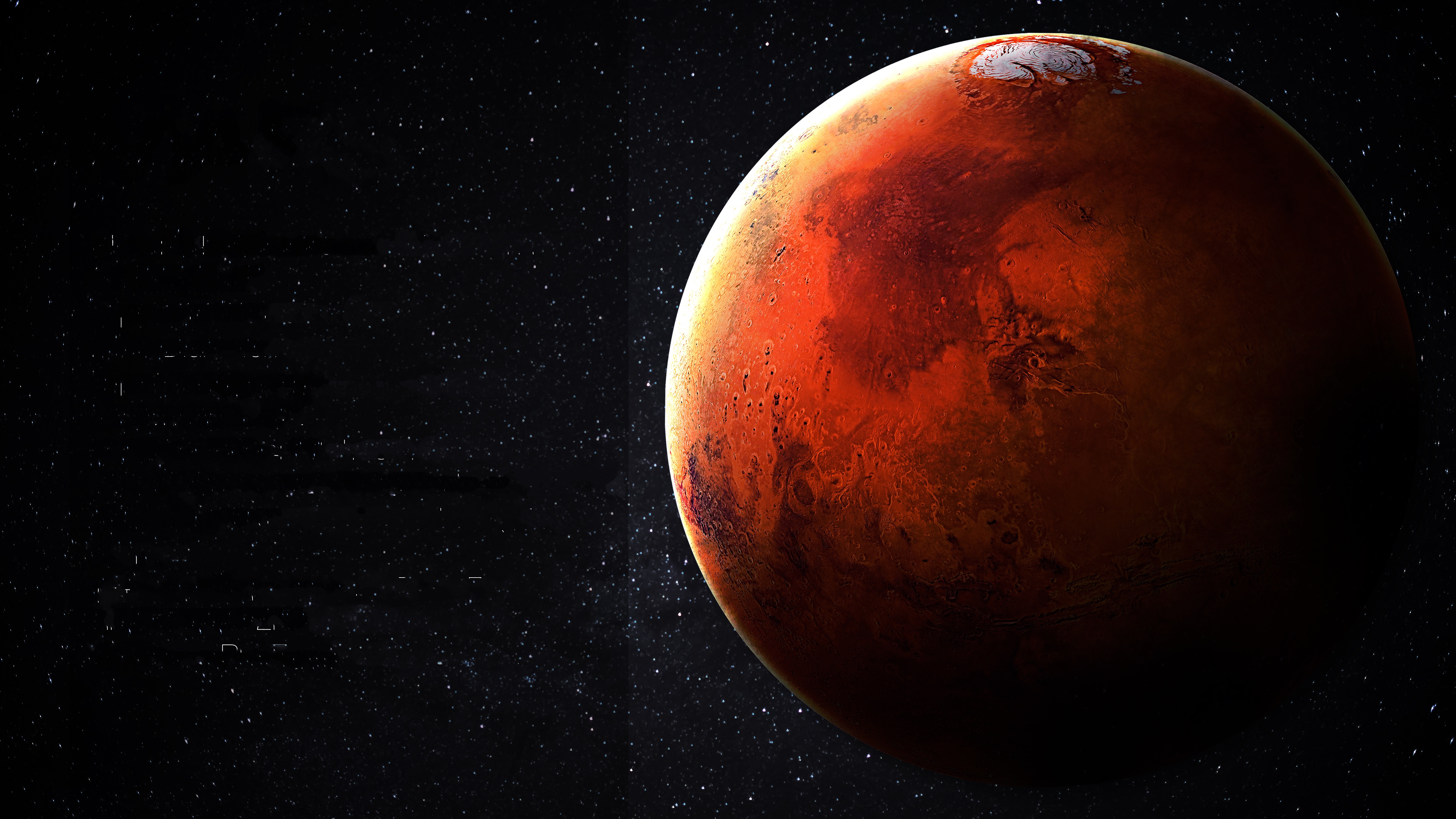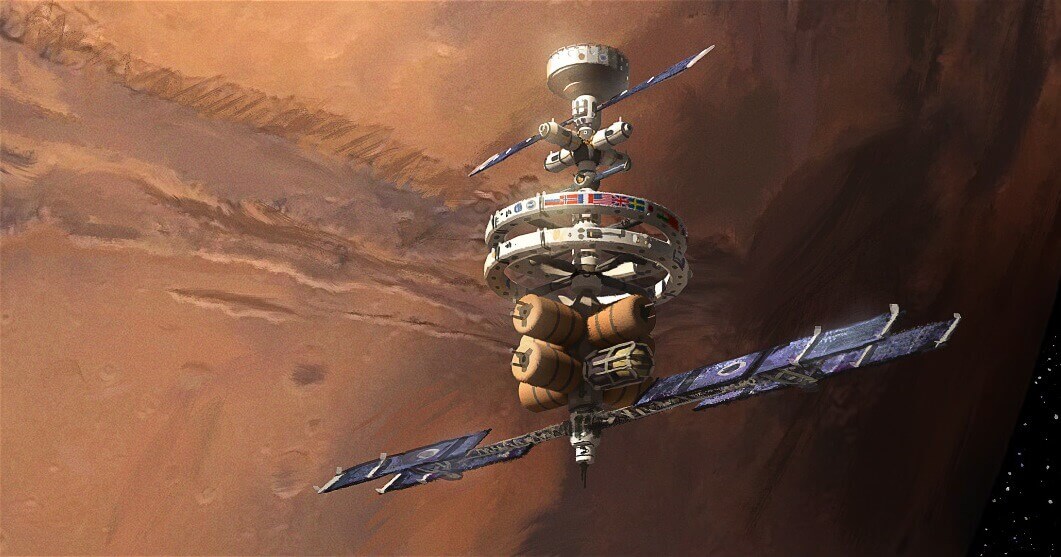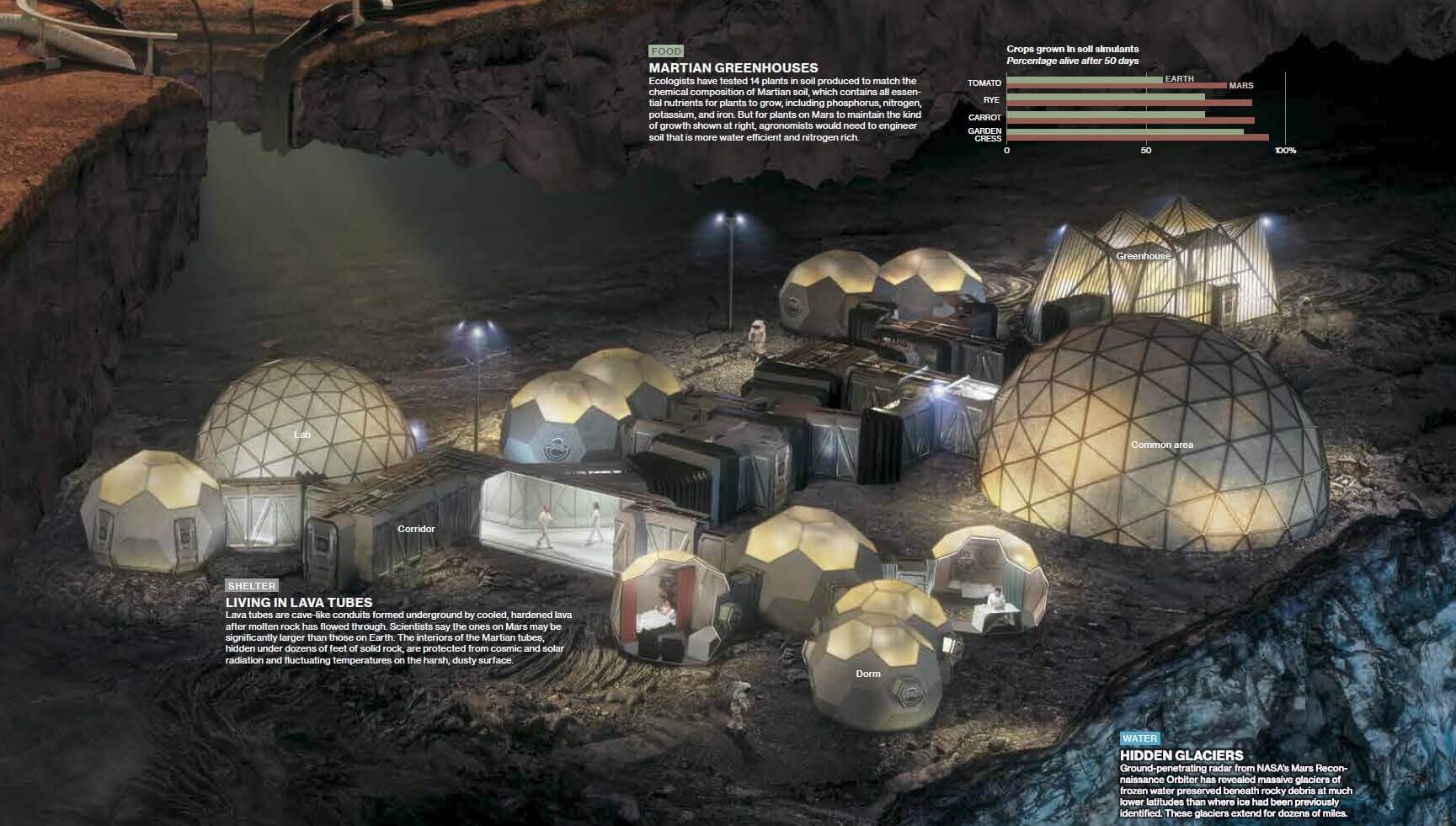6
Month Trip To Mars
23
Milion Km Distance
4
Planet In Solar System

A website describing the colonization of Mars. Mars is the focus of much scientific study about possible human colonization. Mars's surface conditions and past presence of liquid water make it arguably the most hospitable planet in the Solar System besides Earth. Other than Venus, Mars requires less energy per unit mass to reach from Earth than any planet.Permanent human habitation on other planets, including Mars, is one of science fiction's most prevalent themes. As technology advances, and concerns about humanity's future on Earth increase, arguments favoring space colonization gain momentum. Other reasons for colonizing space include economic interests, long-term scientific research best carried out by humans as opposed to robotic probes, and sheer curiosity.
Month Trip To Mars
Milion Km Distance
Planet In Solar System

Colonization of Mars would require a wide variety of equipment—both equipment to directly provide services to humans and production equipment used to produce food, propellant, water, energy and breathable oxygen—in order to support human colonization efforts. Required equipment will include:

Mars Piloted Orbital Station (or MARPOST) is a Russian concept for an orbital Human mission to Mars, with several proposed configurations, including using a nuclear reactor to run an electric rocket engine. A 30-volume draft proposal was produced in 2005. The design for the proposed ship was planned to be ready in 2012, and the ship itself in 2021.Marpost would be launched to Mars together with a fleet of robotic spacecraft designed to study the planet both from its orbit and on its surface, while humans will not land on the red planet. The station would reach the Mars orbit from where its crew will research Mars by operating the robots; for this reason the mission is called ‘hybrid’.Since the robots will be controlled by Marpost crewmembers from Martian orbit it will eliminate one of the basic problems of robotic Mars missions, the 14 minutes delay for radio signals to reach the Earth. Samples of Martian soil will then be delivered by these robots to Marpost and later brought back to Earth. The whole duration of the flight is set for 2.5 years with one month of work in Mars orbit. The mission would also prove that people can survive a lengthy trip through deep space and effectively perform their professional responsibilities, including operating the spacecraft and conducting research activities. Further concepts see Marpost to pave the way for a joint Russian-American mission to the Martian surface. Russia, capitalizing on its extensive experience in building and operating long-term orbital space stations, would build a trans-planetary spacecraft while America, capitalizing on its experience gained during the Apollo Moon landing program, would build a Mars landing module.

Caves are, from many standpoints, an ideal place to locate a habitat. They can be really big, without needing to bring along many building materials beyond a little caulk or expanding foam, and a front door.We've also been doing the whole "living in caves" thing for long enough now that we've got it down to a pretty fine art, at least here on Earth.However, on Mars, caves will pose some unique challenges. First, there's finding them. We don't really have a good method to do this on Earth, so it'll be harder on Mars. Sci-fi novels about finding gigantic caverns under the dome of Olympus Mons' caldera aside, I don't think we even have much of an idea where to start, or whether they exist. With less water around to form them, they may be considerably rarer. Next, there's checking them for interesting stuff that might be disturbed by living in them. Water, life, etc. If there's any water in the cave, then living there would likely cause it to become contaminated, and carry that contamination through the ground to contaminate the entire watershed. Won't be a big deal in a few centuries, once we've stopped caring about that (if we've proven beyond any reasonable doubt there's no life there), but for now, is a really big deal. Next, there's making the cave stable. On Earth, the actions of the elements and life tend to mean that unstable caves become stabilized well enough to live in. On Mars, that guarantee isn't there. Sorta the difference between the stability of a sandcastle (the slightest touch can cause an "avalanche" of sand), and a sandcastle after the rain (it's become just a mound of sand, with few places an avalanche could happen). Next, there's making them safe to live in. On Earth, you just need to go back far enough that the worst of the elements don't reach you: you're safe by default. On Mars, you'd need to seal up the entrance, put a door there, detect and seal any minor leaks with something like expanding foam, then maintain positive pressure at all times to compensate for the minor ones. You're only safe as long as the air supply lasts, but that's the same as an above-ground shelter, and at least the radiation in the cave isn't so bad.





